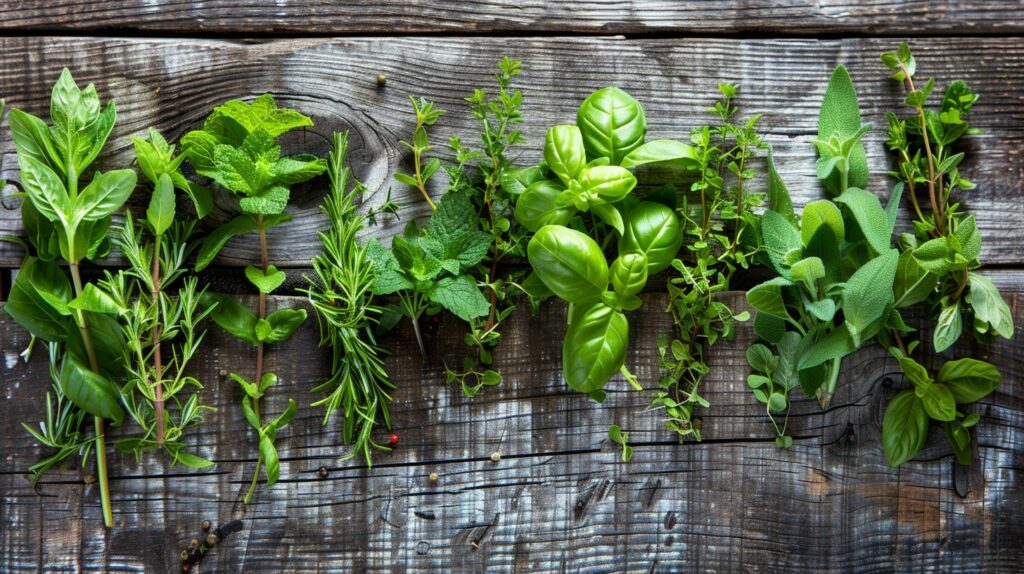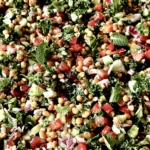Cleaning & Storing Herbs

Fresh herbs can transform any dish, but keeping them fresh and flavorful can be a challenge. This guide is packed with simple, effective tips & tricks to clean, store, and preserve your herbs, so you can enjoy their vibrant taste and aroma for longer. Whether you’re cooking up a storm or planning ahead, these tips will help you make the most of your herbs!
Washing & Drying
Washing
- Washing: Remove any wilted or discolored leaves. Fill a bowl with water and gently swish the herbs around to remove any dirt, debris, or pesticides. This allows any debris to sink to the bottom.
- Blotting Method: After washing, gently pat the herbs dry with paper towels or a clean kitchen towel. (Avoid rubbing or squeezing them too hard, especially fragile herbs like basil or parsley, to prevent bruising or damage.)
- Air Dry: For herbs with sturdy stems like thyme or rosemary, you can tie them into small bundles, hang them upside down in a well-ventilated area and allow them to air dry completely.
- Salad Spinner: A salad spinner can be useful for drying herbs quickly. Place the rinsed herbs in the spinner basket, spin them gently to remove excess water, and then pat them dry with towels.
- For optimal freshness and longevity: It is best to wash fresh herbs form the fridge right before use, not before storing them.
Herbs Best Stored in a Slightly Paper Towel
- Thyme
- Rosemary
- Sage
- Dill
- Chives
- Tarragon
- Trim to remove any wilted or brown ends, roll them up gently in a slightly damp paper towel and store them in a sealed plastic bag or airtight container in the refrigerator.
- The damp paper towel helps to keep these them hydrated and prevents them from drying out too quickly. (Remember to replace the paper towel if it dries out to maintain freshness).
- It’s important to make sure not to oversaturate the paper towel, too much moisture can lead to mold growth. The paper towel should be slightly damp but not wet.
Herbs Best Stored in Water
- Parsley: Store the stems in a jar of water, covering the leaves with a plastic bag, and refrigerate.
- Cilantro: Trim the stems and place the bunch in a glass of water, covering the leaves loosely with a plastic bag, and refrigerate.
- Basil: Trim the stems and place the bunch in a glass of water like a bouquet, covering the leaves loosely with a plastic bag, and keep at room temperature.
- Mint: Trim the stems and place the bunch in a glass of water, covering the leaves with a plastic bag, and refrigerate.
- It’s important to change the water every 1-2 days and trim the ends of the stems prior to adding them to the water to ensure freshness.
Herbs That Freeze Well
- Parsley: Wash and dry parsley thoroughly, then chop it finely. Place the chopped parsley in ice cube trays, fill with water or olive oil, and freeze. Once frozen, transfer the cubes to a freezer bag for long-term storage.
- Cilantro: Follow the same process as parsley, chopping it finely and freezing in ice cube trays with water or oil.
- Dill: Wash and dry the fronds, then freezing them whole or chopped in ice cube trays with water or oil.
- Chives: Chop chives finely and freeze them in ice cube trays with water or oil, similar to parsley and cilantro.
- Mint:
- Basil: Basil can be frozen, but it’s best to blanch it before freezing to preserve its color and flavor. Dip basil leaves in boiling water for a few seconds, then immediately transfer them to ice water. Pat dry, chop or leave whole, and freeze
- Oregano & Thyme: These herbs can be frozen by removing the leaves from the stems
- Rosemary & Sage: These woody herbs can be frozen, but they are best used fresh or dried.
Flat Freezing
- Place a thin layer of chopped herbs and oil inside a zipper-lock bag.
- Seal the bag, leaving about a half-inch of space open.
- Squeeze out excess air before sealing the bag completely.
- Place the bag on a large plate or baking sheet, spreading out the herb mixture to a thin, even layer, and freeze until solid.
- When ready to use, cut or break off as much as you need, reseal the bag, and store the rest for later use.
- Herbs frozen this way freeze and melt quickly due to the greater surface area.
Notes
- When using frozen herbs, consider their texture and adjust recipes accordingly. For example, frozen herbs are great for cooking but may not work as well as fresh herbs for garnishes or salads.
- Stems:
- Dill weed, rosemary, and thyme can be frozen as stems. Wrap 3 or 4 stems in plastic wrap and then over-wrap in aluminum foil before freezing.
- While frozen herbs like dill weed may become limp and darken in color, they still impart flavour, especially for pickling.
- Freezing works well for herbs like parsley, dill, basil, chives, lemon balm, mint, or tarragon. Experiment with different herbs to determine your preferences.
- Frozen herbs can be used in the same proportion as fresh herbs, primarily in cooked dishes due to their limp texture when thawed. They may not be as attractive as garnishes.







